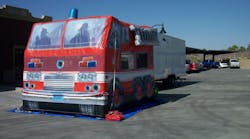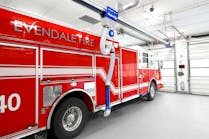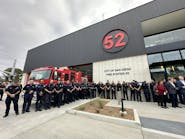Popular do-it-yourself television shows often feature trained chefs, electricians or carpenters explaining the secrets of their profession and how to make a project easier. Even the most popular presentations at conferences are by individuals who have real life experience in unique or heroic situations. These days no one needs to reinvent the wheel and to rely on another’s experience is not only wise, but often prudent.
Many fire chiefs may only build one fire station during their career. Large or growing departments may have the opportunity to build one facility then build another with improvements based on what they have learned from building the previous one.
We asked a few fire chiefs and project managers what advice they would offer to fire chiefs who are beginning the process of building a new facility.
Start planning early - According to Jim Bloomer, assistant chief and current emergency manager, City of Mesa, Ariz., Fire and Medical Department, “Building a fire facility needs to start several years in advance and there are several reasons for this. The first is that you will need to sell it to your community and to the local politicians that the need is there. Second, financing needs to be arranged and if you are going to go with bonds this could take several years alone. You will need to work around election cycles and getting political support. Many fire departments like to purchase the lots they will be building on ahead of time to lessen the impact of the cost of the new a station.” Bloomer added, “I recommend maintaining a 20-year capital improvement plan and at least once a year, pull it out and update.”
Conduct a needs assessment - Benjamin Major, fire chief of Fayetteville Fire/Emergency Management Department, Fayetteville, N.C., said, “It is important to conduct a space and equipment needs assessment and to include what that looks like in the future. In most cases the department is investing in a resource that will be used for 50-plus years. It is also worthwhile to provide an opportunity for representatives of the end users to participate in the design phase and provide input when it is possible. I share relevant experiences of our recent station projects, detailing what worked well and what did not work so well.”
Major added, “Also, it is important to designate a project manager from the department and that person needs to have the authority to make decision as issues come up, even though the more major the issue, the more dialogue and collaboration will be required.”
Knowledge of construction helps - William A. Pearson, Jr., captain, City of Atlanta, Ga., Fire Rescue Department, is the construction project manager. He offered, “Have someone or individuals on your team who know or have some experience in building construction (a member/employee who does construction, your department’s plans examiner, a representative from your building department, etc.). Have a plan in place and know what you want, but be able and willing to change if it’s best for your department.”
Build for longevity – Ron Johnson, assistant fire chief, Bennington, Neb., Fire and Rescue, oversees an all-volunteer department that provides fire and ALS ambulance service. With a large donation from a prominent family in the Bennington Rural Fire Protection District #7, the department was able to significantly upgrade their plans for a better building.
“This (donation) allowed the structure to become a 100-year building of block-stone and brick.
“We are extremely glad we made this to be long lasting building. As stated before, it should last 100 years with the quality of products used on the project. We used many items for long-term cost savings also. Some of these include LED lighting, R-50 closed-cell insulation package and in-floor heating in the apparatus bay area. Even during the construction phase this winter we saw a cost savings with this feature. Other items used were a geothermal ground loop system with 32 wells. Engineers tell us that this system will have a seven-year cost pay back.”
Building a new fire station is the largest financial investment a department will make, so before calling an architect, it is worth taking the time to research the latest innovations, network with other fire departments that have new stations and design for future growth and longevity.










